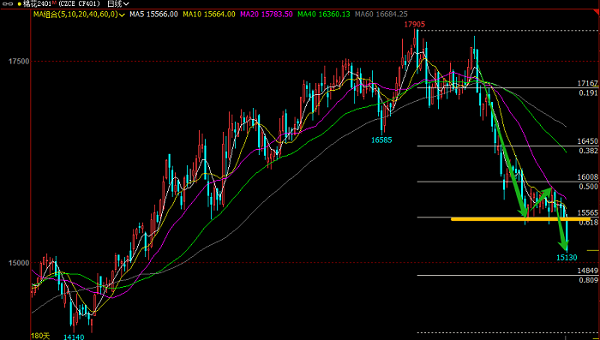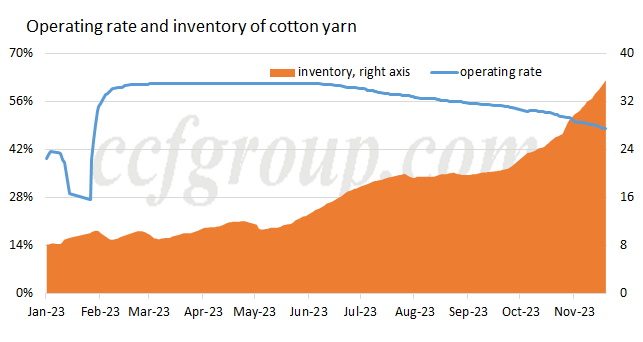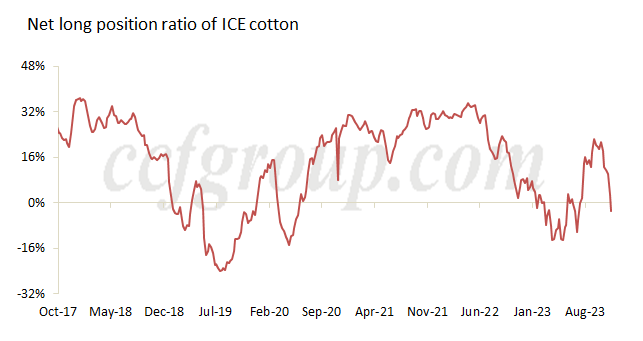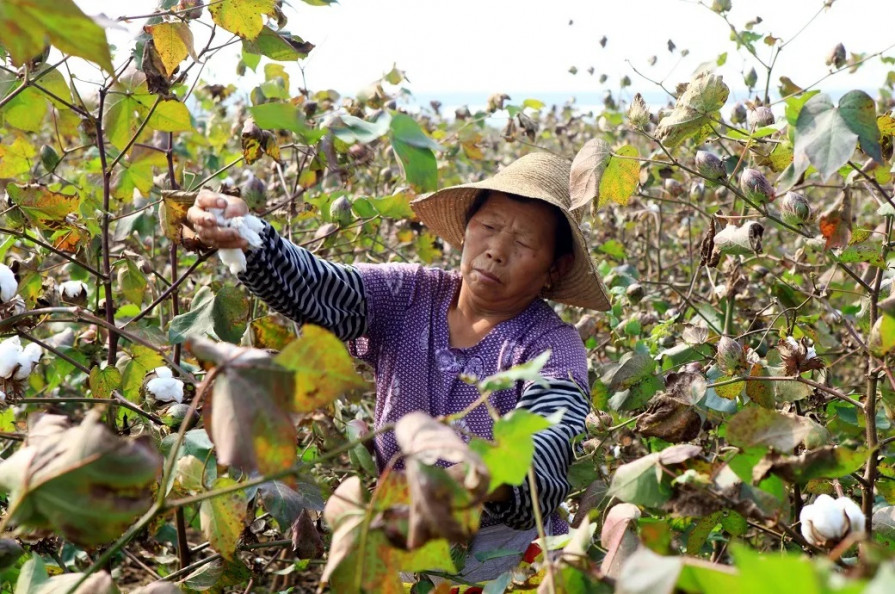1. Short-term downward pressure on ZCE cotton intensifies
Technically, ZCE major cotton contract has fallen below the mid-term support level of around 15,570yuan/mt. Combined with the fact that it has been trading below the 20-day moving average in the short term, bearish sentiment has clearly intensified after a minor adjustment following a downtrend. The gradual decline in the trading proportion of reserved cotton at auction in the earlier period indicates that buyers are more inclined to purchase when prices rise, making the chances of a short-term turnaround appear bleak.

2. Imports of cotton and cotton yarn increase in Oct
Cotton imports of China reached 290,000 tons in Oct, showing a significant year-on-year and month-on-month increase. The most notable increase was in the imports from Brazil, which reached 79,000 tons, a year-on-year increase of 42% and a month-on-month increase of 55%. This was followed by 45,000 tons of imports from Australia, which saw a slight month-on-month decrease but an increase of around 1600% compared to the previous year. U.S. cotton imports rose by 58% year-on-year. Additionally, imports of cotton yarn into China reached 170,000 tons, with a staggering year-on-year increase of 163%. The import volume of 100% cotton yarn was 159,000 tons, showing a slower year-on-year growth rate but still reaching 63%.
The increase in cotton imports in Oct has created expectations of a loose supply in the domestic cotton market, which has contributed to the short-term price decline. However, the increase in cotton yarn imports has exacerbated the mindset of downstream spinning mills with high inventories to sell off their goods, casting a stronger shadow over the already relatively pessimistic downstream sentiment in the fourth quarter.
3. More cotton yarn mills cut production or suspend operation
Cotton yarn prices continue to decline, and spinners and traders are rushing to sell off their goods, but downstream demand is limited. The operating rate of fabric mills have rapidly declined, leading to further price drops in cotton yarn. More spinning mills cut production or suspend operation and inventory is hard to reduce.

4. Net long positions of ICE cotton futures turn negative
According to CFTC data as of Nov 14, 2023, the net long positions in ICE cotton futures were -2.77% [(long position-short position)/total position], a decrease of 5.47 percentage points compared to the previous week. This marks the sixth consecutive week of decline in net long positions of ICE cotton futures and the first time since Aug that they have turned negative (the last time was at the end of May).

In summary, ZCE cotton is currently facing pressure from both upstream and downstream factors, with weak demand as the core logic for downward pressure. Technical pressure becomes prominent after lack of market confidence. According to feedback from some traders, consensus is forming that cotton prices will have little improvement for the rest of the year, but the view of a recovery around the second quarter of next year is widely accepted. From a futures perspective, it is anticipated that the actual changes in demand at the beginning of next year may determine when spring will arrive.
Πηγή: ccfgroup.com

